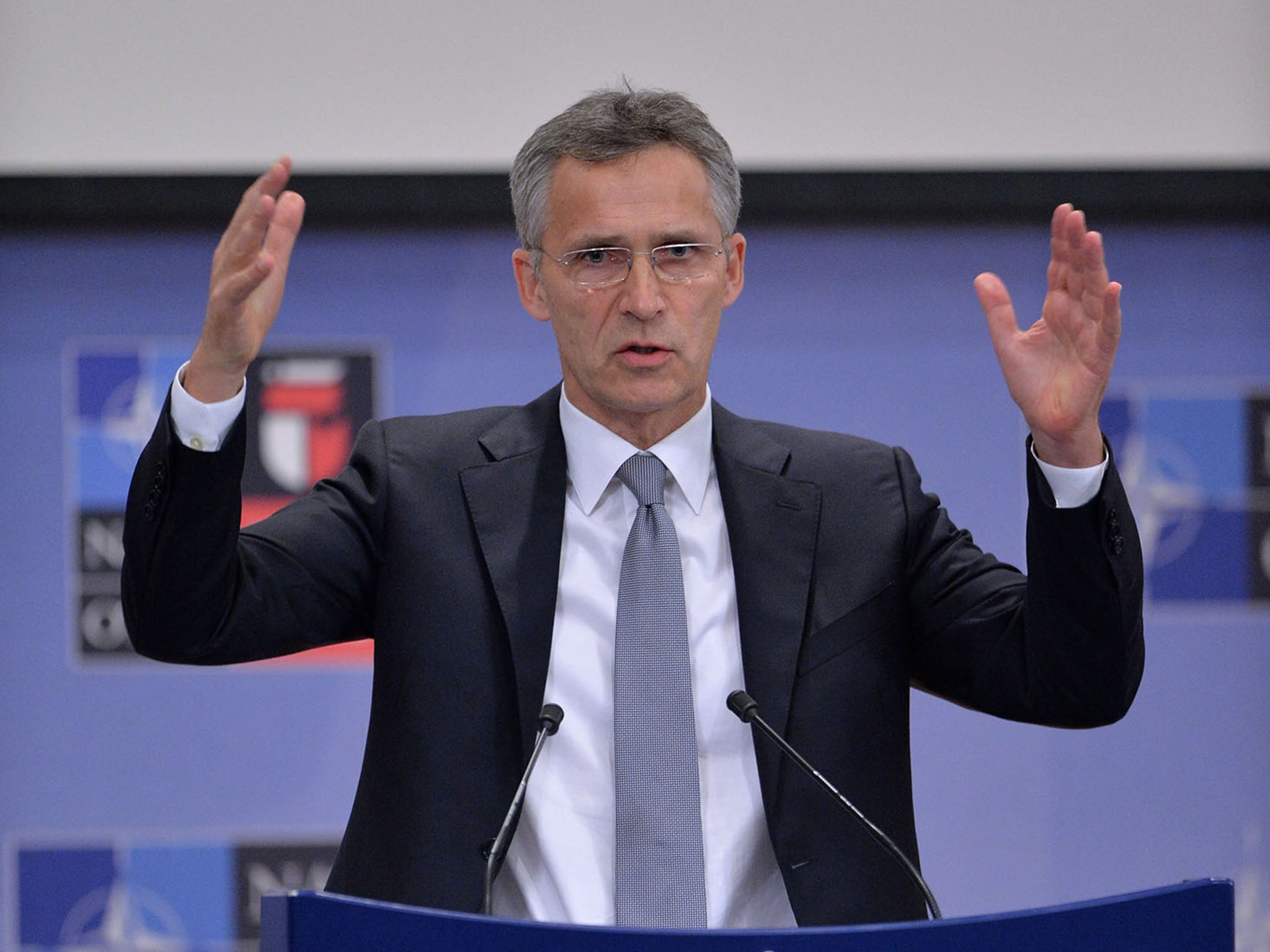Nato sends 4,000 troops to Baltic to boost defences against Russia
‘This will send a clear signal that Nato stands ready to defend any ally’

Your support helps us to tell the story
From reproductive rights to climate change to Big Tech, The Independent is on the ground when the story is developing. Whether it's investigating the financials of Elon Musk's pro-Trump PAC or producing our latest documentary, 'The A Word', which shines a light on the American women fighting for reproductive rights, we know how important it is to parse out the facts from the messaging.
At such a critical moment in US history, we need reporters on the ground. Your donation allows us to keep sending journalists to speak to both sides of the story.
The Independent is trusted by Americans across the entire political spectrum. And unlike many other quality news outlets, we choose not to lock Americans out of our reporting and analysis with paywalls. We believe quality journalism should be available to everyone, paid for by those who can afford it.
Your support makes all the difference.Nato will deploy four multinational battalions - around 4,000 troops - to the Baltic states and Poland to bolster their defences in the region, the secretary-general has announced.
Addressing a press conference in Brussels on Monday, Jens Stoltenberg said alliance defence ministers would approve the move in their meeting on Tuesday.
Estonia, Latvia, Lithuania and Poland have been eager for a stronger Nato presence since Russia annexed Crimea and became involved in the Ukraine conflict.
Although the secretary-general was careful not refer to Russia directly, the motivation behind the increased defences in the region was apparent.
Mr Stoltenberg said: “Nato has taken robust action to protect our nations, and to contribute to stability in our neighbourhood. But the challenges we face are enduring. So we need to be prepared for the long-haul.
“We agreed to enhance our forward presence in the eastern part of the Alliance. We are now discussing the size, the scope and the composition of that force. Based on the advice of our military planners, we will agree to deploy by rotation four robust multinational battalions in the Baltic states and in Poland.
“This will send a clear signal that NATO stands ready to defend any ally,” he said.
Although Russia has yet to respond to the announcement, they previously accused Nato of increasing military forces near its borders and said it would do whatever is required to protect its interests.
Leading European security analyst Jonathan Eyal said the four new batallions are not intended to repel attacking Russians, but will instead deter them from acts of aggression.
“Deterrence of the Russians will be more in the assurance that if they were to attack, they would come into contact with Nato forces almost immediately, and that therefore the Russians should not doubt Nato's determination to fight. For that, you don't need large numbers of troops.”
Mr Stoltenberg explained how the four batallions, each consisting of 800-1,000 troops, would deploy on a rotational basis, rather than being based permanently in the host countries.
The United States, Britain and Germany have already committed to acting as so-called framework nations to furnish core forces for three of the battalions.
Just last month, General Sir Richard Dhireff, who served as Nato’s Deputy Supreme Allied Commander in Europe between 2011 and 2014, warned of nuclear war with Russia.
He said the alliance must increase its capabilities in the Baltic States or risk “potential catastrophe”.
The general said: “The chilling fact is that because Russia hardwires nuclear thinking and capability to every aspect of their defence capability, this would be nuclear war.
“We need to judge President Putin by his deeds not his words. He has invaded Georgia, he has invaded the Crimea, he has invaded Ukraine. He has used force and got away with it.
“In a period of tension, an attack on the Baltic states… is entirely plausible.”
Mr Stoltenberg said the four battalions represent just part of “a much bigger shift in our posture, in response to the challenges we face”.
He said the Nato response force had tripled, now numbering 40,000 troops – of which 5,000 are ready to move at short notice.
He also said there were eight new small headquarters located in the “Eastern part of our alliance” to coordinate planning, exercises and reinforcements, and they are working with national governments and parliaments to ensure troops can move quickly across Europe. “We have made significant progress,” he said.
Associated Press contributed to this report.
Join our commenting forum
Join thought-provoking conversations, follow other Independent readers and see their replies
Comments